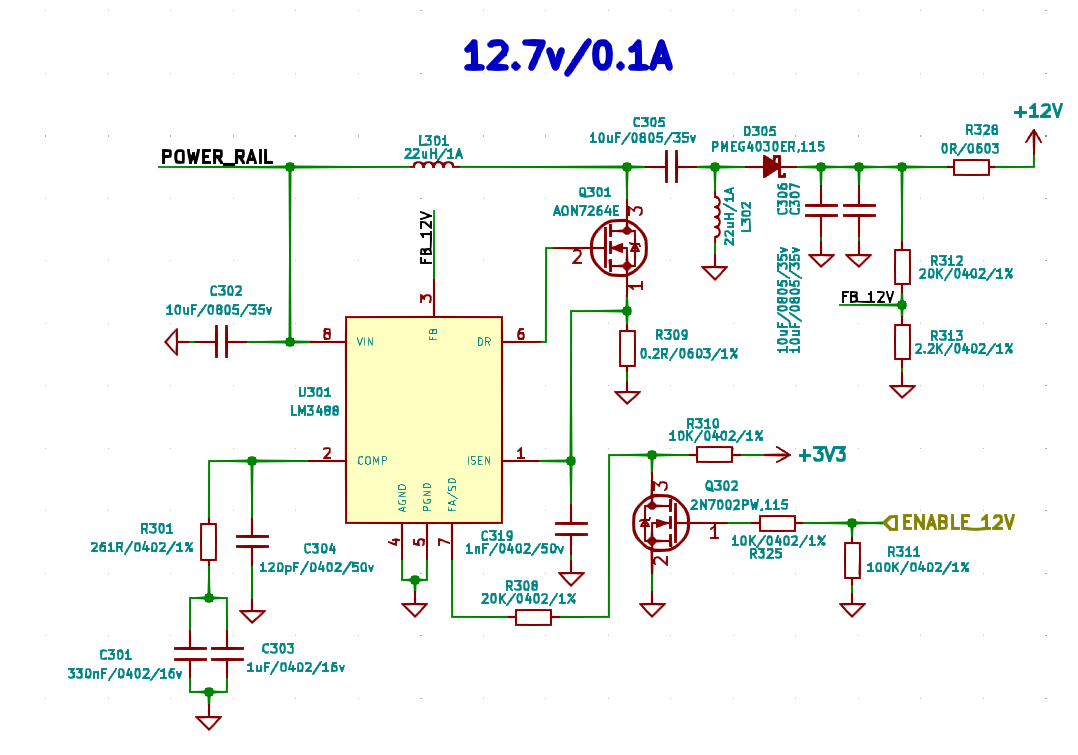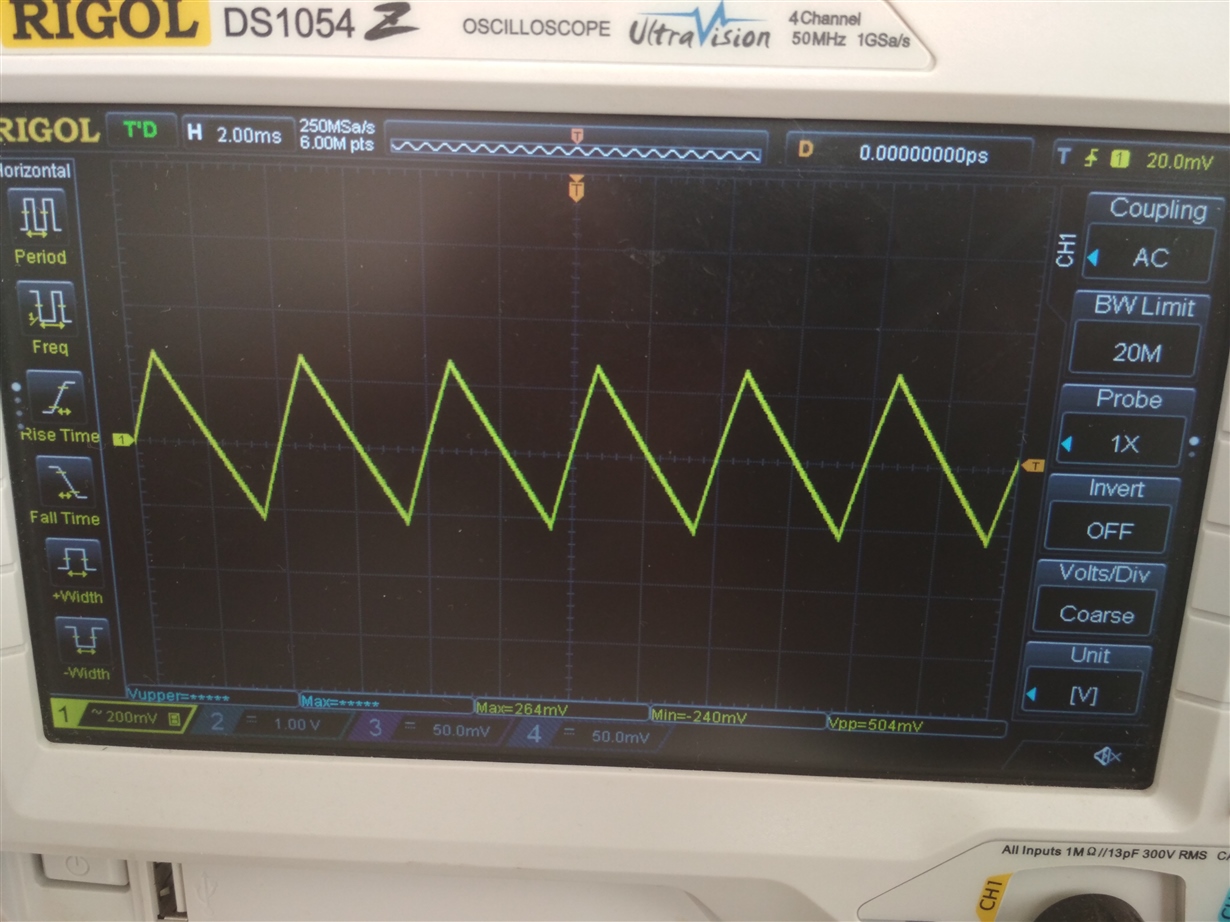Other Parts Discussed in Thread: LM5118, LM25118, LM5122, TPS61088, TPS54302
Hi,
This is my circuit (I have another one reg. set to 3.8V/2.5A having the same problem):
I'm having the pulse-skipping behavior when no load or a low load:
The input voltage will vary from 3-25v all the time.
To design the regulator, I've used the AN-1484(https://www.ti.com/lit/an/snva168e/snva168e.pdf) step-by-step. I don't know if I missed something, but I did not find a way to calculate the minimum load for the given component values.
What is the exact formula to make sure my circuit do not enter in pulse-skipping mode down to 1mA in any condition of input voltage?
Thank you!





